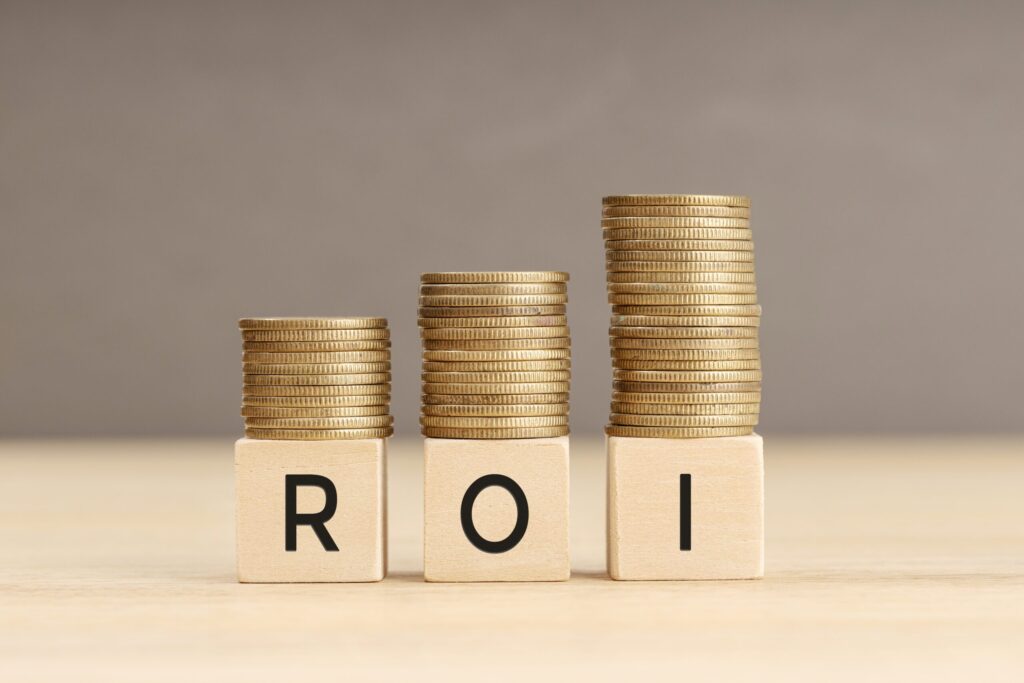When considering the options for financial investments, few have proven to be as rewarding and stable as real estate. For Australians seeking to diversify their investment portfolio, the allure of property investment remains strong, offering the potential for long-term wealth accumulation and financial security. However, before venturing into this world, it is crucial to understand what type of returns one can reasonably expect from an investment property.
At OpenCorp, we recognise that property investment is not just about acquiring physical assets but also strategically maximising your returns. Our experts understand the nuances of property investment and aim to provide insights to help you make informed decisions.
It is essential to remember that returns from an investment property can vary significantly based on several factors, including location, property type, financing structure, and economic conditions. With that said, read on for a general overview and guidelines to help you set realistic expectations as you embark on your property investment journey.
How do investment properties provide returns?
Investment property returns come from two key areas: rental yield and capital growth. These factors significantly determine your property investment’s overall profitability and potential wealth accumulation.
Rental yield refers to the yearly income from the tenant occupying your investment property. This is usually shown as a percentage of the property’s overall value. To understand rental yield better, let’s break it down into two components: gross rental yield and net rental yield.
Calculate gross rental yield by dividing the annual rental income by the property’s value. For example, if your investment property is valued at $1,000,000, and your tenant pays $50,000 per year in rent, your gross rental yield would be 5%. This figure provides an initial assessment of the rental income potential of your property.
However, it is equally important to consider the costs of owning and managing the property. These costs may include property management fees, maintenance expenses, council rates, water fees, and insurance premiums. Subtracting these costs from the rental income provides the net rental yield, representing the amount you ultimately pocket as a return on your investment. Using the earlier example, if your annual cost is $10,000, your net rental yield would be 4%.
While rental yield offers a steady stream of income, it is only one aspect of the overall returns from an investment property. Capital growth, on the other hand, reflects the appreciation of the property’s value over time. It is an essential factor for long-term wealth accumulation.
To calculate capital growth, you compare the property’s initial value to its current value after a certain period. For example, if the property was purchased for $1,000,000 and, after five years, its value has increased to $1,500,000. In this scenario, you have achieved capital growth of 50% overall, or approximately 8.44% per annum. This growth can significantly contribute to your investment’s profitability and overall return.
It’s important to note that while capital growth has the potential to yield substantial returns, it is not guaranteed and can fluctuate depending on market conditions and other factors. For example, property values can appreciate or decline, impacting the capital growth percentage.
Property investors must understand the dynamics of rental yield and capital growth. While rental yield provides consistent income, capital growth can enhance your investment’s value over time. By balancing these two factors, you can aim for a robust return on your investment property.
What return should you expect from your investment property?
When considering the potential returns from an investment property, looking at historical data and long-term trends is helpful.
It’s essential to recognise that property is primarily considered a growth asset rather than a defensive one. As such, it is expected to outperform the inflation rate over the long term. In addition, property investments have the potential to generate both rental income and capital growth, contributing to overall returns.
However, it’s crucial to note that investing in property with a short-term mindset can introduce risks and uncertainties. Property values can fluctuate, and short-term fluctuations may result in negative returns due to capital losses. Therefore, a long-term investment approach is generally advisable for property investors to mitigate this risk and maximise returns.
By adopting a long-term perspective, you can potentially benefit from the compounding effect of capital growth and steady rental income. As a result, the property’s value may appreciate over an extended period, and you can enjoy the rewards of increasing equity. In addition, this approach allows you to ride out market fluctuations and capture the full potential of your investment property.
Want to find out if property is the right investment for you?
Property returns can vary based on several factors, including the location, property type, economic conditions, and the overall state of the real estate market. Conducting thorough research and seeking expert advice can help you make informed decisions and set realistic expectations for your investment.
Become a confident property investor with the help of OpenCorp. Our team will guide you on a proven path that will help you build a property portfolio to reach your financial goals, all without compromising your lifestyle. Let’s chat!









